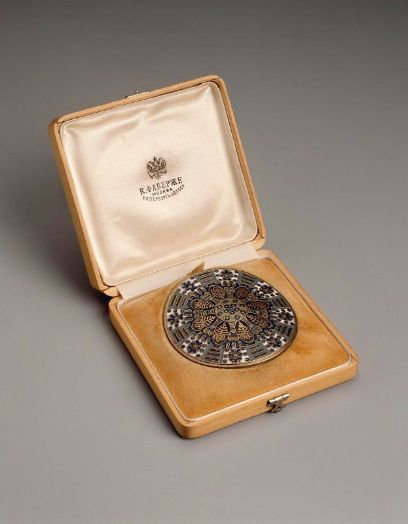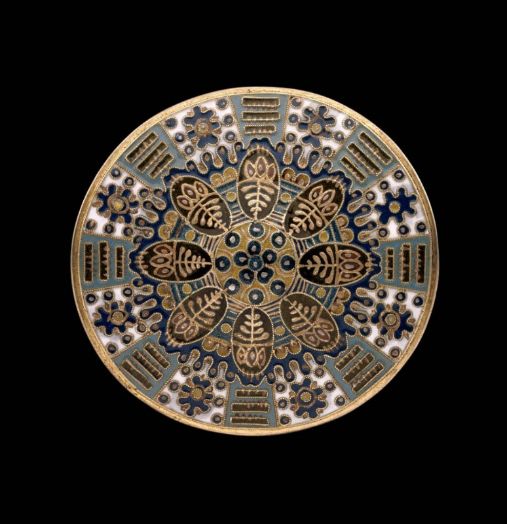Музеи и выставки
Belt-buckle
Between 1890 and the First World War, the emphasis on slender waists ("wasp waists") in ladies' fashion spurred the wearing of belts with ornamental buckles. Depending upon the country, buckles were made in the Arts & Crafts (England and Scotland), Art Nouveau (France and Belgium), Jugendstil (Germany and Austria), and Modernista (Spain) styles. In Russia, the design was more historical following the tastes of the Romanov court, Fabergé's most important patron. The colorful buckles created by the firm were typically rectangular or oval in shape and decorated with transparent enamels over metal with engine-turned patterns.
This cloisonné enameled buckle is unusual in that the design is in the Neo-Russian style, very much influenced by Austrian and German stil moderne or Succession style. Such designs were composed of repetitive, geometric forms and highly stylized floral motifs. Works in metal were enlivened by enamels in blue, green, white, and brown. Some, including this example, have twisted, silver-gilt cloisons and painted enamel highlights in gold.
Original presentation box marked K. Fabergé/Moscow/St. Petersburg.Odessa in cryllic
Russian (St. Petersburg)
1908–1914
Peter Carl Fabergé Fedor Ruckert
Depth x diameter: 0.6 x 6.5 cm (1/4 x 2 9/16 in.)
Silver gilt and enamel
Museum of Fine Arts, Boston
Gift of Mrs. Eustace Strong in memory of her mother, Mary K. Wells
Accession number: 30.114


